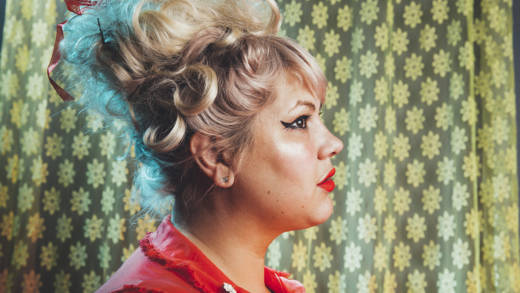Shannon in Nashville gets its name from Dusty Springfield’s Dusty in Memphis, and it’s steeped in vintage rock ‘n’ roll, blues, soul and pop from the ’50s and ’60s. That time-travel effect is due in large part to the album’s session players, which include drummer Gene Chrisman and keyboardist-percussionist Bobby Wood of the Memphis Boys. (The Memphis Boys were the original house band of the historic American Sound Studio, which hosted recording sessions by many of the era’s stars, like Elvis Presley, Neil Diamond, Orbison and Springfield herself.)
Auerbach, who plays guitar on Shannon in Nashville, orchestrated the ambitious collaboration. After discovering the Clams’ album at a record store, he met Shaw at her show at the Fillmore and invited her to Nashville, Easy Eye Sound’s home base, to record her solo debut. Shaw, who had only recently ascended from playing underground warehouse gigs to headlining clubs and appearing at festivals (Shannon and the Clams are set to perform at Outside Lands in August), was intimidated by the prospect of the pop-star treatment. The label put her up in Nashville and immediately immersed her in songwriting sessions on a level of professionalism and intricacy removed from her D.I.Y. sessions with the Clams.
“I didn’t really know everything that goes into creating the whole vibe and buildup. I come from this weird basement scene where people are teaching themselves to play and to record,” she says. “Whereas Dan totally knows; one of his best skills is to be able to hear all the things going on and knowing when something’s missing, and what thing could elevate another thing. It was impressive to watch these demos I brought in be spun into gold.”
The stint in Nashville was a confidence-building exercise for Shaw. Never did she dream—as en eight-year-old listening to Orbison’s greatest hits, or as a 24-year-old learning to play bass—that she would one day be in the studio with some of Orbison’s original players. Although she says she sometimes questioned herself as the only woman and youngest person in the sessions, she committed to playing the part of a confident musician—and eventually internalized the idea that she deserved to be there. (Poking fun at this experience, in the video for the album’s lead single, “Cryin’ My Eyes Out,” Shaw gets into drag and plays every member of her band, including the engineer.)
“I had this internal dialogue—obsessive dialogue—to keep my head in the game trying to remind myself to be present and take advantage of the opportunity, and remind myself to be excited and stoked,” she says. “It was weird, like I had not had this much internal conflict and dealing with low self-esteem in so long.”
Those traces of self-doubt aren’t audible on Shannon in Nashville, where Shaw bares herself in emotionally affecting vocal arrangements set to sprightly, retro pop instrumentation—a potent combination that sounds like the soundtrack to shedding a tear on the dance floor. On “Cryin’ My Eyes Out,” a song inspired by her parents’ fraught relationship when she was young, bouncy drums and warbly surf guitar bolster Shaw’s passionate wail of frustration about whether the family dynamic will ever change. On “Cold Pillows,” about the fortitude it takes to walk away from a doomed relationship, a slow, cinematic buildup of doo-wop backing vocals gives way to Shaw’s stinging, cathartic hook.
Throughout the album, Shaw demonstrates self-awareness and emotional depth, examining not only heartbreak, but the experience of breaking someone else’s heart and taking accountability for the aftermath. Her sorrowful timbre, learned from all those repeated listens of Roy Orbison years ago, is piercing and stirring, cutting to the heart of her subject matter.
Though Shaw borrows from decades past, Shannon in Nashville is anything but stale and makes a strong case for rock ‘n’ roll’s enduring appeal.


